A simple modification to the Portable Video Camera Viewer project can turn it into a low-cost night vision device. All you need to do is add an external black & white CMOS video camera (which should have internal infrared LED lighting) and a SPDT switch. Harbor Freight Tools sells a perfect camera for this. The part number is 47546 and should be around $30 when on sale. Wal-Mart also sells several tiny CMOS video security cameras which should also work. The Harbor Freight Tools version comes with six internal IR LEDs, a microphone for receiving audio, and can easily be powered from the viewer's own 9 volt battery. The addition of the SPDT switch will allow you to chose which video input is displayed on the viewer. This will allow you to use the Portable Video Camera Viewer for its original purpose of testing video surveillance installations inside Mosques.
By their nature, CCD camera sensors are sensitive to short-wavelength infrared radiation. You can test this by pointing any remote control at a video camera and observing the pulses of "light."
To homebrew a simple night vision device, all you need is a CCD camera hooked up to a simple video display. A handheld television with a video input jack, like what is sold at Radio Shack, is a perfect for use as a battery operated portable display. This version uses an old viewfinder from a 1980s camcorder.
Make an infrared "flashlight" by stringing together surplus infrared LEDs in a series/parallel combination or use an infrared laser diode module from an old laser printer or fax machine.
Some of the specifications for the Harbor Freight Tools #47546 camera are below:
Power Source : 7.5 VDC @ 300 mA (9 VDC will work)
Image Sensor : 1/4-inch CMOS
Scanning System : 2:1 Interface
Resolution : 350 TV Lines
S/N Ratio : > 48 dB (AGC Off)
Min. Illuminance : 0.0 Lux
AES : 1/50-1/6000
Lens : f=3.6 F=2.8
Gamma Correction : 0.45
Sync Signals : Horizontal = 15,750 Hz Vertical = 60 Hz (NTSC/EIA)
Video Output : Composite 1.0 Vp-p @ 75 Ohms
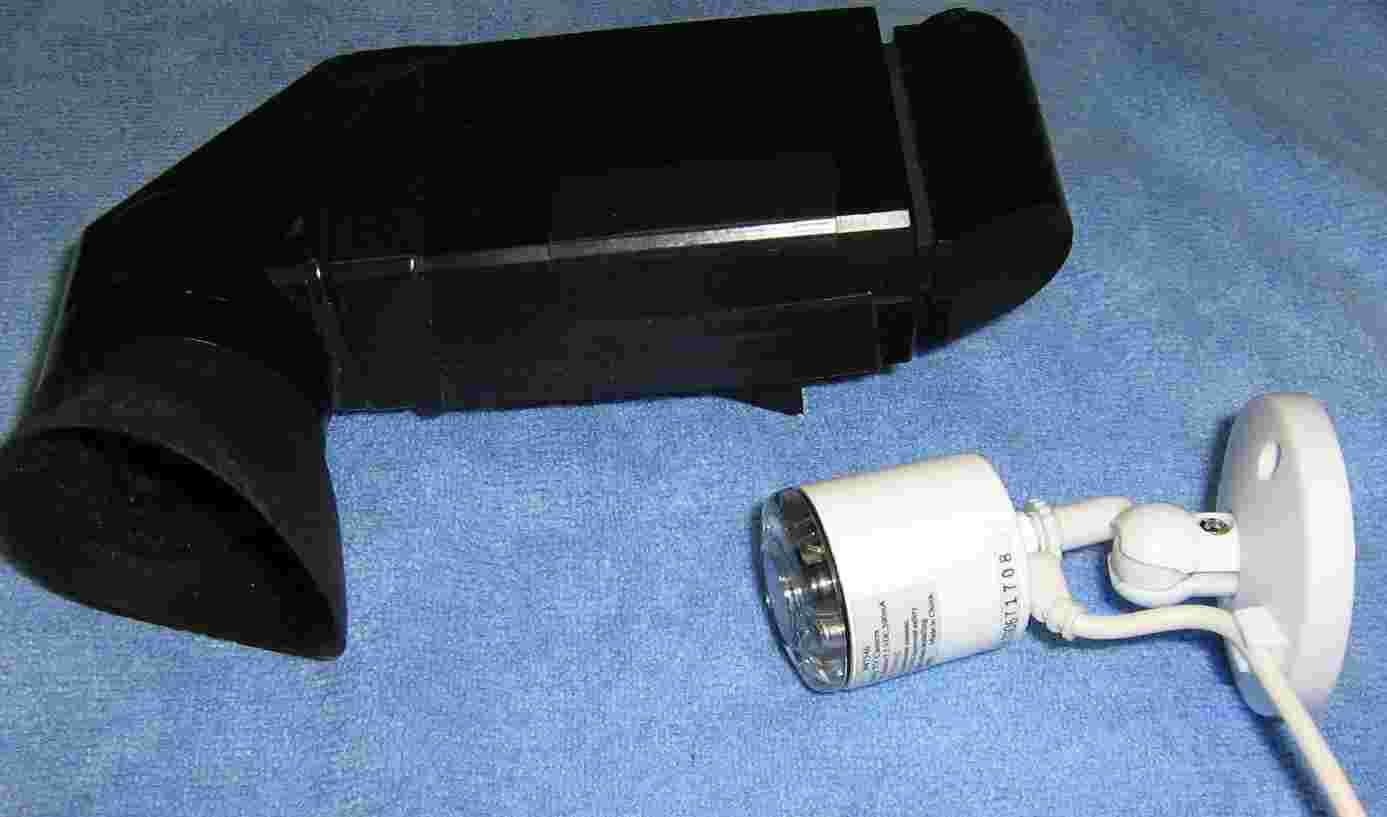
Overview of what's needed. The Portable Video Camera Viewer project from GBPPR 'Zine #22 and a Harbor Freight Tools #47546 CMOS Video Camera.

Closeup of the video camera. It is completely sealed inside a fairly weatherproof package. Six infrared LEDs are used for illumination when operating in the dark. The addition of more infrared LEDs with some type of focusing system will greatly increase the "night vision" performance of the camera.
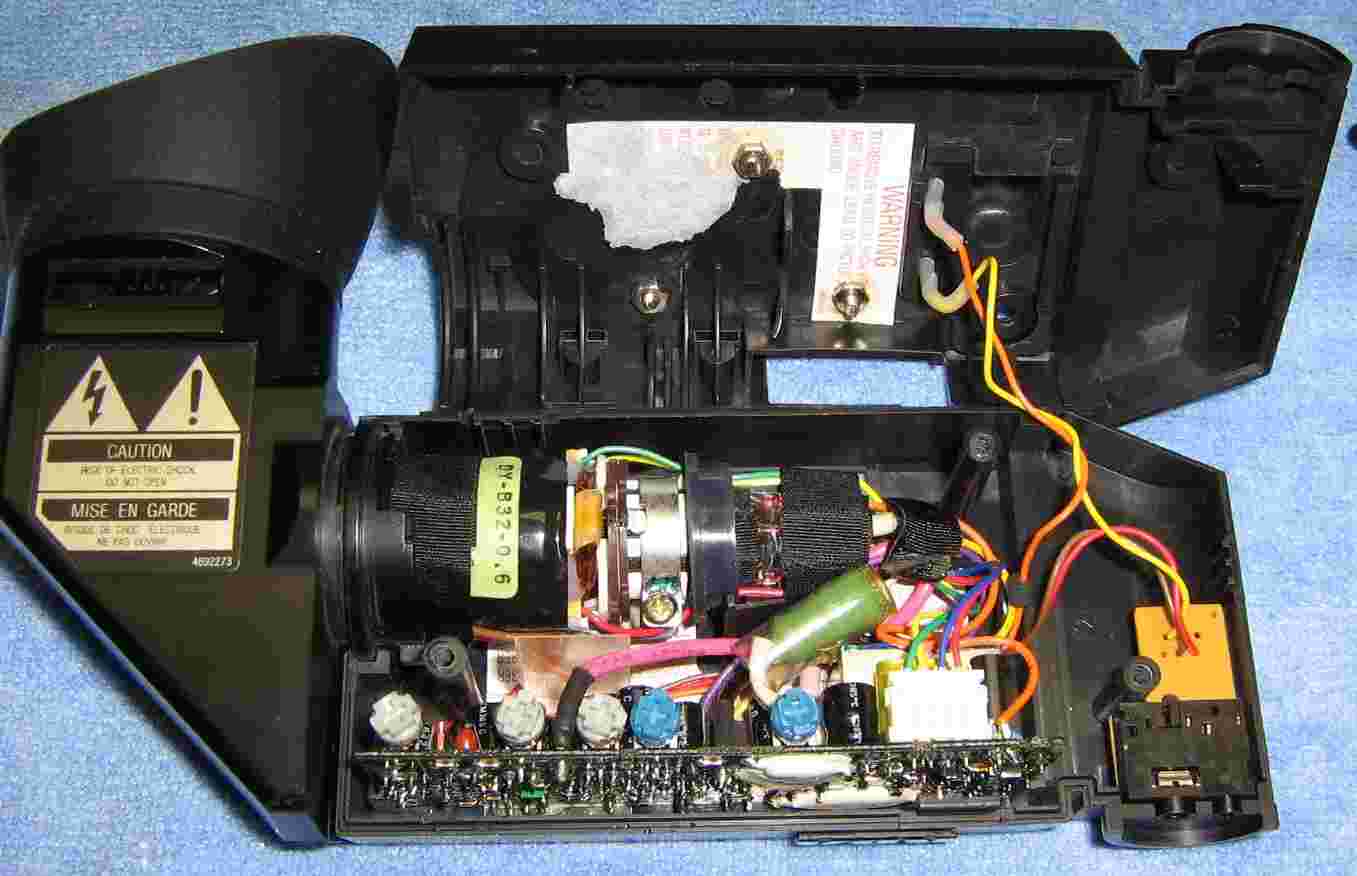
Inside the "stock" Portable Video Camera Viewer as we left it. External video input is on the lower-right.
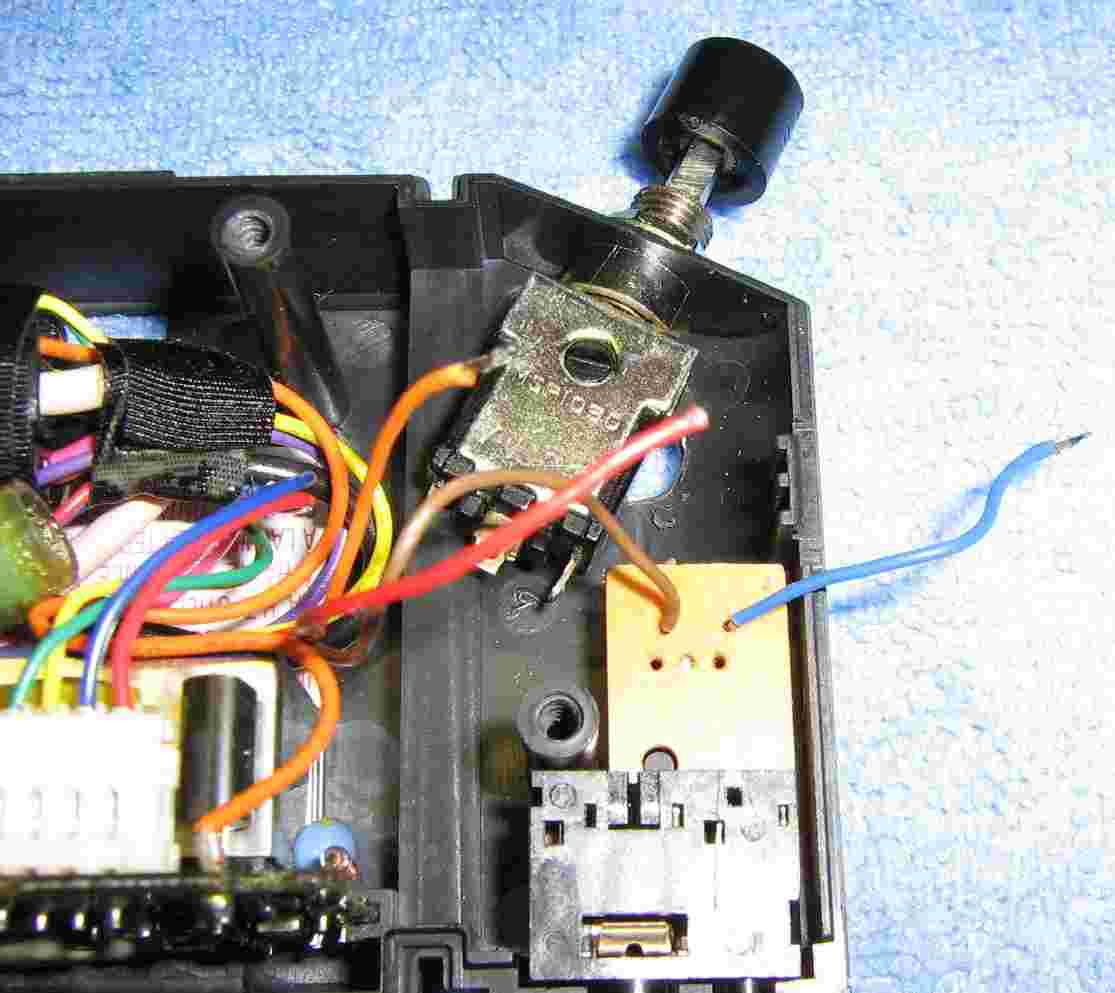
Find a convenient location and install a SPDT switch. This will select between which video input is sent to the viewer's display. The external video input still comes in via the 1/8-inch panel jack and is soldered to the other pole on the input selector switch.
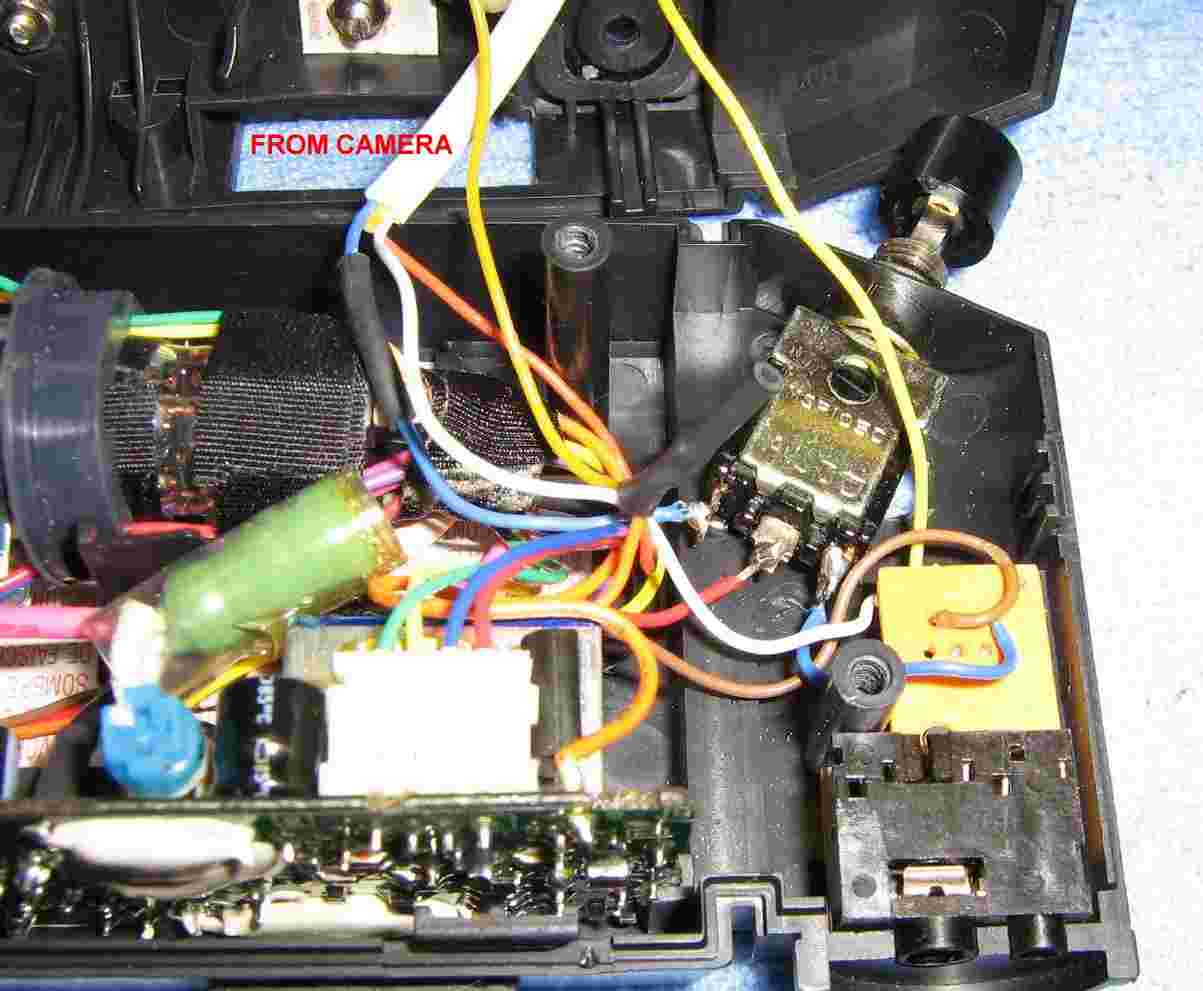
Wires resoldered in. The RED wire on the center terminal of the SPDT switch is the viewer's main video input. The BLUE wire on the right is from the 1/8-inch external video input jack, and the other BLUE wire (left side) is the video input from the CMOS night vision camera.
Splice in the ORANGE wire from the CMOS camera into the viewer's main +9 VDC power line. The WHITE wire is ground. Be sure everything shares a common ground! The YELLOW wire from the CMOS camera is the audio line, and is not used. You can cut it off.
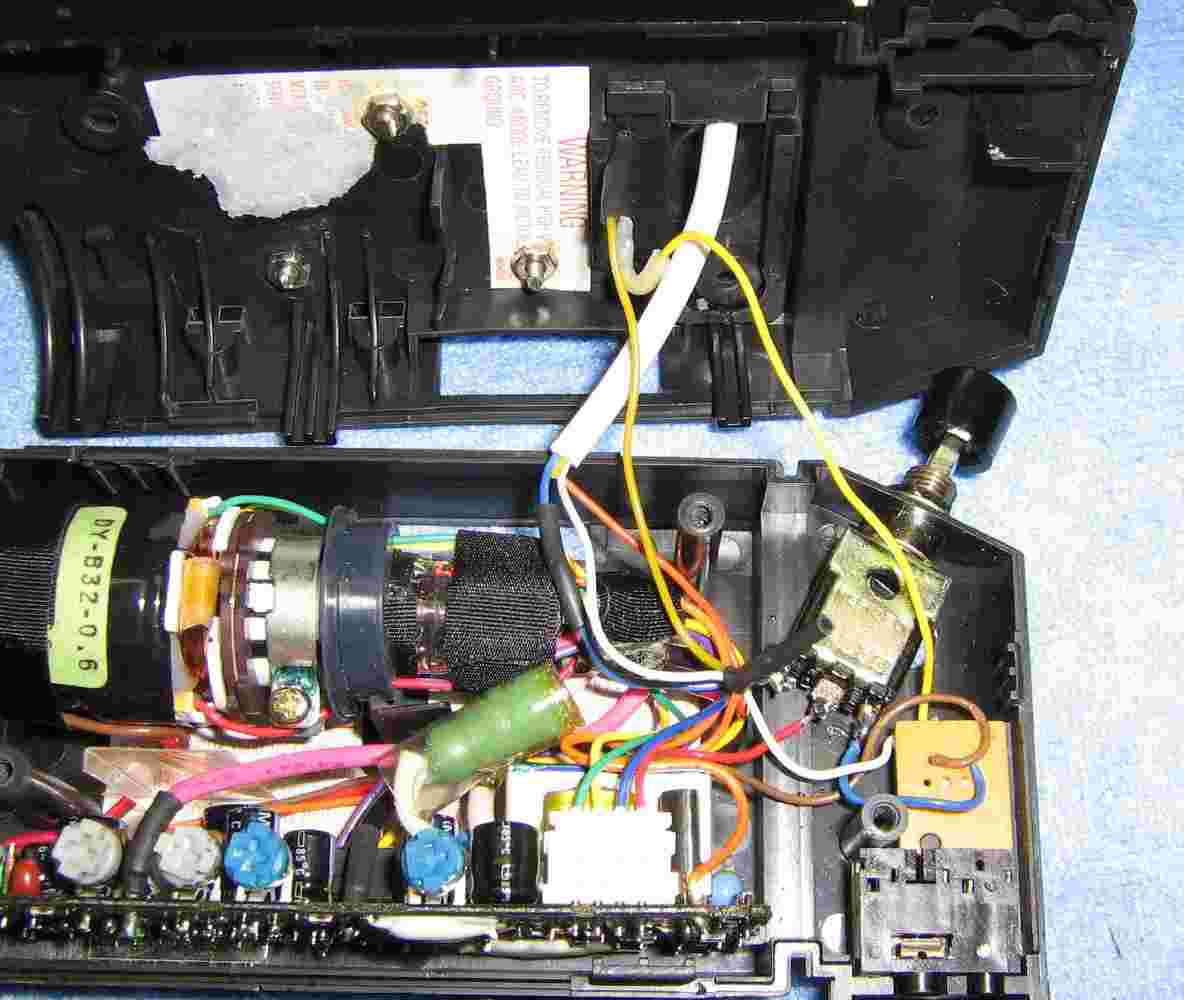
Alternate view. Be sure nothing is shorted out.
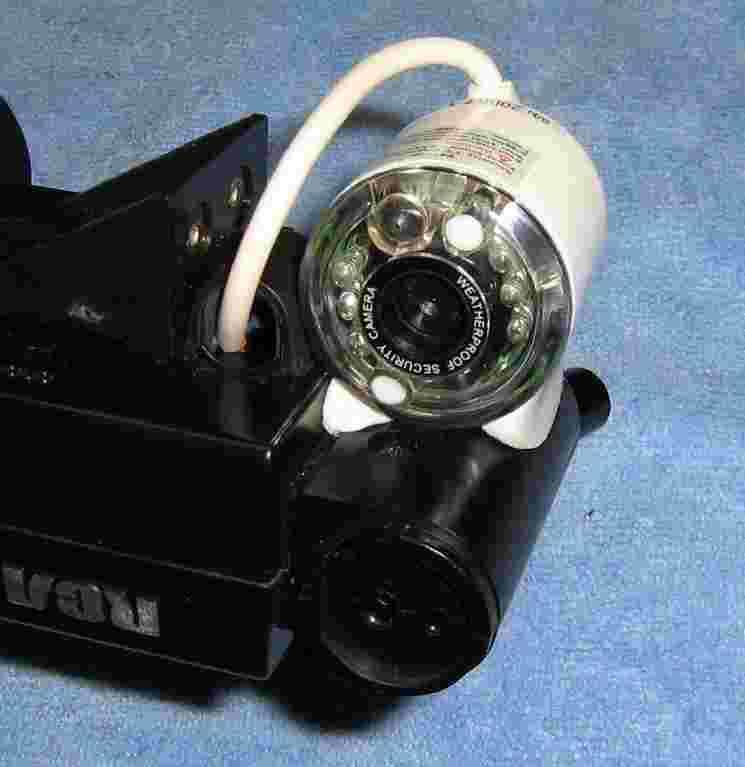
Epoxy the camera to a suitable location on the outside of the Portable Video Camera Viewer. Be sure it is pointed in the right direction and "right-side" up - test this ahead of time! Also be sure no screws or adjustment holes are covered up.
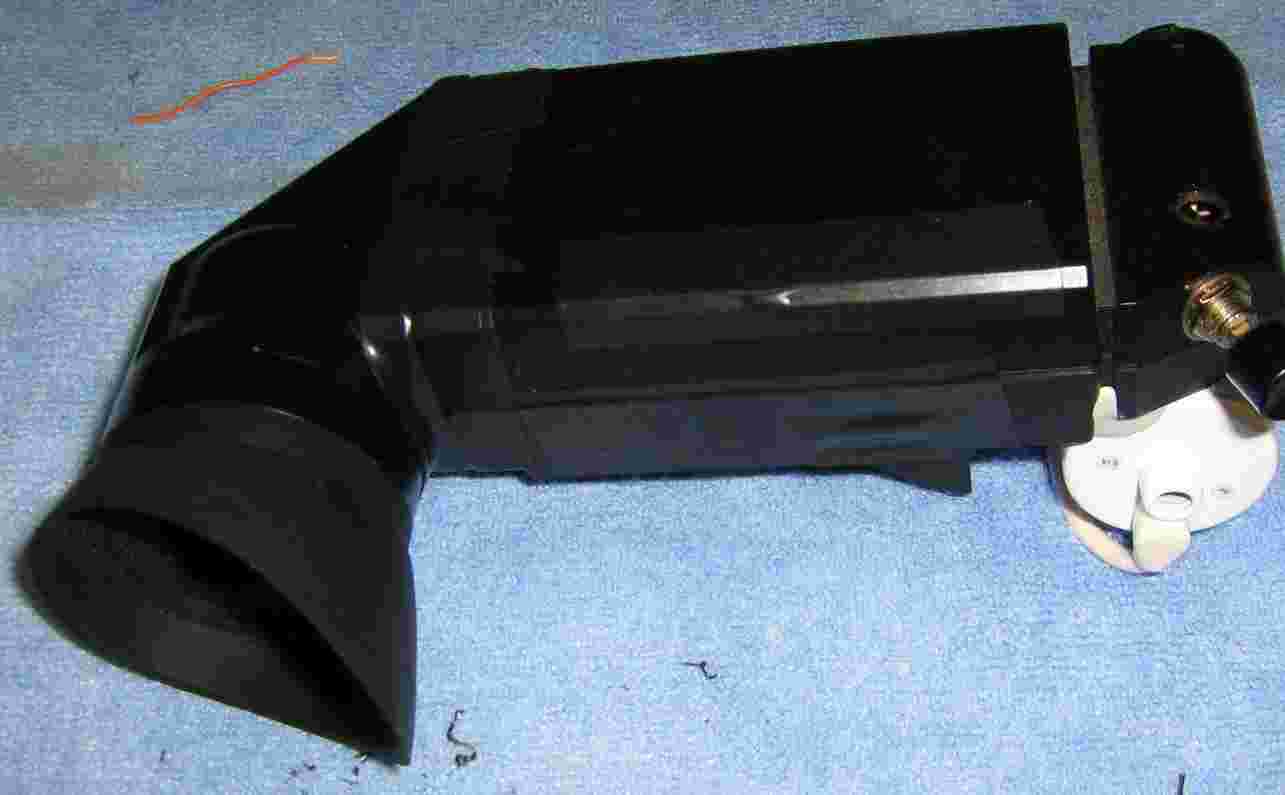
Finished rear view.







